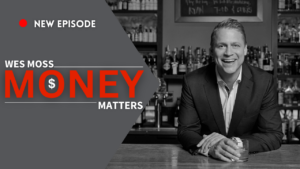Dearly departed 2016 can be summed up thusly: “Wow, I did not see that coming!”
How else can you describe a year in which Donald Trump won an against-all-odds victory in the presidential election, British voters stunned the world by voting to leave the European Union, the Chicago Cubs ended an iconic 108-year championship drought by winning their first World Series, and we lost several beloved performers all too young, including Prince, David Bowie, Carrie Fisher and Alan Thicke.
Not to be left out, the U.S. stock market delivered its own unexpected outcome. After a 10 percent pullback in the very beginning of 2016, the worst-ever start to a year, the market roared back to finish up 10 percent.
That was a heck of a ride. But now that 2016 is in the history books, it’s time to look ahead. What will 2017 bring? As 2016 gleefully and harshly reminded us, predicting the future is a risky business. But every year, my team at Capital Investment Advisors tries to do exactly that. We digest a wide range of research reports and analysis from various sources and apply our collective years of experience to identify the trends we believe will shape the coming year. Here’s what we see coming in 2017:
- Trumponomics: lower taxes, less regulation — President-elect Trump wants a top personal tax bracket of 33 percent, down from today’s 39.6 percent. He’s also proposing a huge corporate tax rate reduction, from the current 35 percent rate down to 15 percent.
Trump’s appointment of business mogul Carl Icahn as his special advisor on regulation suggests the president-elect is serious about rolling back federal oversight of business. Over the past 40 years, the federal government has issued 180,000 new regulations, costing the economy an estimated 0.8 percent of GDP per year.
The prospect of lower taxes and less regulation should add significant lift to U.S. economic growth, which has been stalled at under 2 percent for nearly a decade.
- Unintended consequences of Trumponomics — If the economy begins to accelerate, interest rates would rise and the U.S. dollar might continue to gain strength, pushing beyond its recent 14-year high. An extremely strong dollar has the potential to take a bite out of U.S. corporate profits and could dampen U.S. exports by making our aircraft, pharmaceutical and automobile exports more expensive for other countries to consume.
Some initiatives on the Trump agenda could lead to economic moderation later in 2017. For example, Trump’s proposed trade tariffs could increase prices for many everyday consumer products. Example: A 45 percent levy on Chinese imports could raise prices at Wal-Mart a staggering 8 percent.
- Stable oil prices — We expect oil prices to fluctuate in the $50-$65 range in 2017. OPEC is planning a production cutback that would ostensibly put a floor under oil prices. But U.S. oil production continues to grow, and President Trump may revitalize some two dozen domestic oil infrastructure projects. That would add to the world’s oil supply and put a ceiling on oil prices.
- Stocks take a breather — The S&P 500 grew 8 percent in value during the last two months of 2016 — more than three-quarters of the entire year’s gain. This fevered pace will undoubtedly slow at some point in 2017. Our data suggests that overall company earnings will climb nearly 10 percent in the new year. But even if that happens, we expect market growth in the mid-to-high single digits in 2017.
- Trump sectors — Get “FIT” in the new year — We expect Financials, Industrials and Technology stocks to do well in 2017 as U.S. GDP accelerates in 2017.
Financials (banks, et cetera) could benefit from better net interest margins due to higher overall interest rates and reduced regulation. Defense companies are positioned to feast on Trump’s proposed 15 percent-plus increase in military spending. Industrial companies should benefit from an increase in business spending on new infrastructure projects. Technology firms should get a bump as companies increase IT spending and expand their use of automation.
- Interest rates top out — As the economy gains momentum in 2017 powered by the prospect of lower personal and corporate tax rates, look for the Fed to raise interest rates at least twice in 2017. That would come on top of a dramatic spike in rates during the last several months of 2016. The 10-year Treasury went from 1.4 percent in the summer, to over 2.5 percent at year end — an 80 percent increase.
Even if the interest rate on the 10-year Treasury increases to 3 percent, which is the high end of our expected range, that would amount to just a 20 percent rise in rates. That’s a far less dramatic increase than what markets experienced in 2016.
- Bond investors get a raise — Bond investors have grown accustomed to interest rates steadily declining since Ronald Reagan came into office in 1981. The yield on the 10-year Treasury bond fell from 14 percent in 1981 to 1.4 percent this past summer. This steady drop in rates has been a perennial tailwind for bond investors. But the wind changed in the back half of 2016 as rates began to rise. On the upside, higher interest rates mean more income for investors moving forward.
That’s our take on 2017. Of course, as former Defense Secretary Donald Rumsfeld once observed, in any situation there are knowns, known unknowns, and unknown unknowns. We’re sure to run into a few of the latter in 2017. I look forward to helping you make sense of all of them in the coming year.
Read the original AJC article here.
DISCLOSURE
This information is provided to you as a resource for informational purposes only. It is being presented without consideration of the investment objectives, risk tolerance or financial circumstances of any specific investor and might not be suitable for all investors. Past performance is not indicative of future results. Investing involves risk including the possible loss of principal. This information is not intended to, and should not, form a primary basis for any investment decision that you may make. Always consult your own legal, tax or investment advisor before making any investment/tax/estate/financial planning considerations or decisions.









